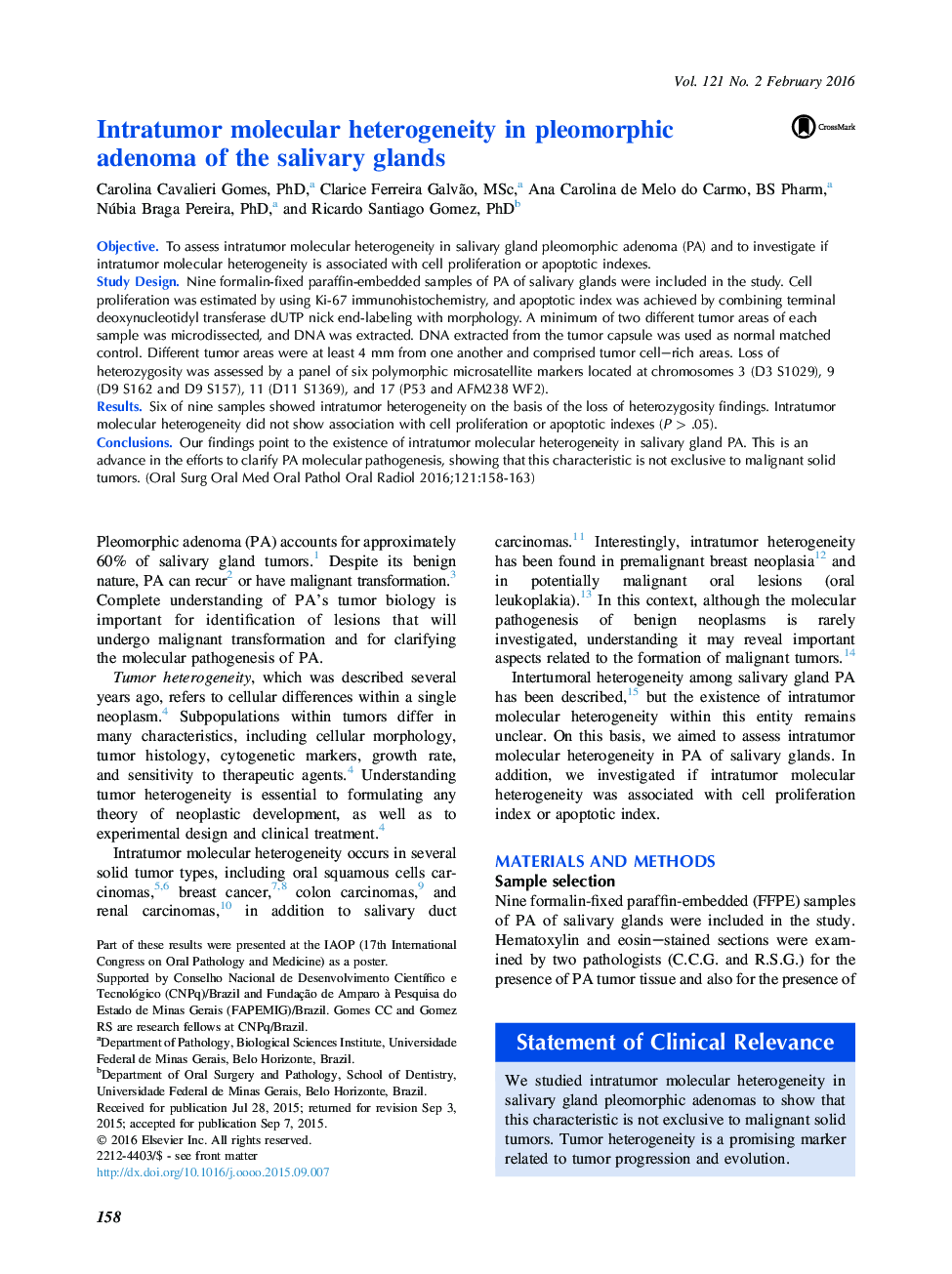| Article ID | Journal | Published Year | Pages | File Type |
|---|---|---|---|---|
| 3166590 | Oral Surgery, Oral Medicine, Oral Pathology and Oral Radiology | 2016 | 6 Pages |
ObjectiveTo assess intratumor molecular heterogeneity in salivary gland pleomorphic adenoma (PA) and to investigate if intratumor molecular heterogeneity is associated with cell proliferation or apoptotic indexes.Study DesignNine formalin-fixed paraffin-embedded samples of PA of salivary glands were included in the study. Cell proliferation was estimated by using Ki-67 immunohistochemistry, and apoptotic index was achieved by combining terminal deoxynucleotidyl transferase dUTP nick end-labeling with morphology. A minimum of two different tumor areas of each sample was microdissected, and DNA was extracted. DNA extracted from the tumor capsule was used as normal matched control. Different tumor areas were at least 4 mm from one another and comprised tumor cell–rich areas. Loss of heterozygosity was assessed by a panel of six polymorphic microsatellite markers located at chromosomes 3 (D3 S1029), 9 (D9 S162 and D9 S157), 11 (D11 S1369), and 17 (P53 and AFM238 WF2).ResultsSix of nine samples showed intratumor heterogeneity on the basis of the loss of heterozygosity findings. Intratumor molecular heterogeneity did not show association with cell proliferation or apoptotic indexes (P > .05).ConclusionsOur findings point to the existence of intratumor molecular heterogeneity in salivary gland PA. This is an advance in the efforts to clarify PA molecular pathogenesis, showing that this characteristic is not exclusive to malignant solid tumors.
